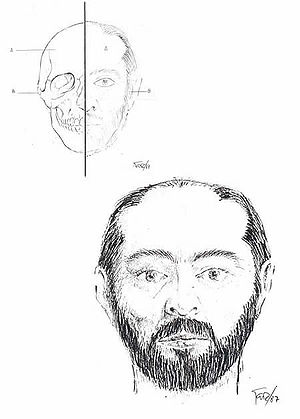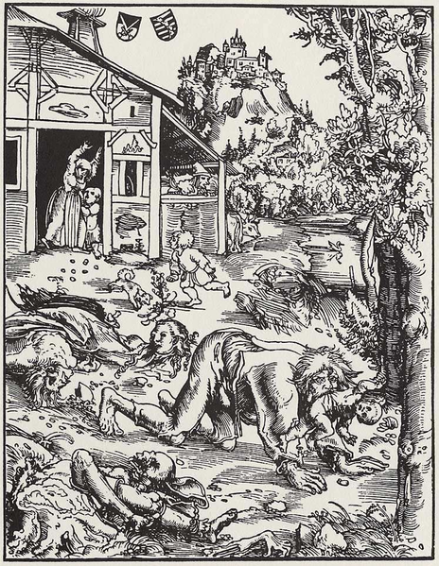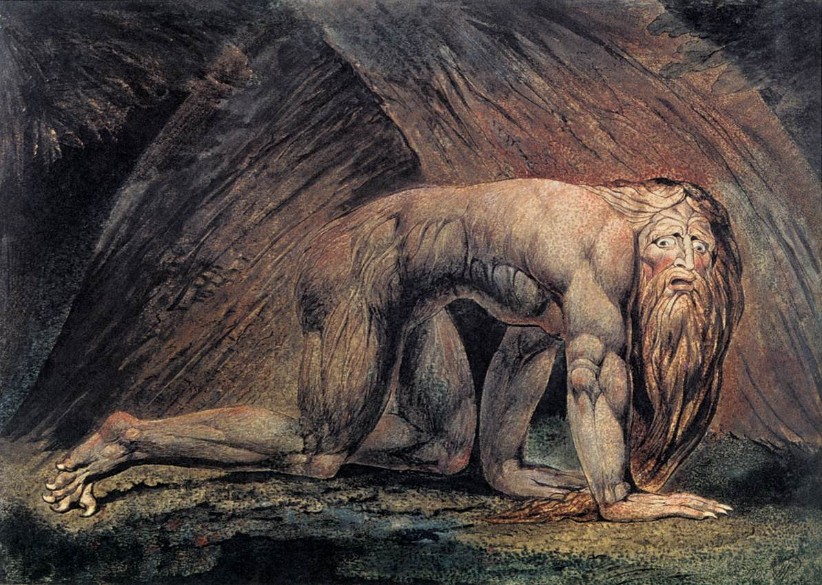Manuel Blanco Romasanta, who confessed to thirteen murders in the
mid-nineteenth century, is regarded as Spain’s first documented
criminal psychopath and the first known serial killer. He told the
court which tried him that he was afflicted with a terrible curse which
turned him into a wolf, and is even referred to as such in the court
proceedings which still exist in the Kingdom of Galicia Historical
Archives: ‘Causa 1788, del hombre-lobo,’ – ‘Case 1788, of the wolf-man.’
His story has been told in two films: ‘El Bosque del Lobo,’ where José
Luis López Vázquez won the Best Actor Award at the 1971 Chicago Film
Festival; and the most recent, Paco Plaza’s 2004 film, ‘Romasanta: La
Caza de la Bestia’ (The Werewolf Hunt).
He was born in the small village of Regueiro, Orense province, in
Spain’s most north-westerly region, Galicia, on 18th November 1989 and
was, by all accounts, quite well-to-do for his class. He knew how to
read and write, and travelled by mule, both of which were quite
uncommon at the time.
He started off as a tailor, but left his home to become a travelling
salesman when he was widowed at the age of 24, and travelled widely
through Galicia, Portugal and Castile.
The first case against him came on his travels outside Galicia, for the
murder of Vicente Fernández, the constable of León, who was charged
with recovering a debt of 600 reales Romasanta owed to a Ponferrada
suppliers where he bought the merchandise for his mobile shop.
Fernández was found dead and Romasanta was judged by default (for
failing to appear). He was sentenced to 10 years in 1844.
He had by now returned to the mountains of Orense and used the village
of Rebordechao, in Vilar de Barrio, as his base while he continued his
trade as a pedlar.
A number of women connected with Romasanta began to disappear, seven
women, and two children who travelled with their mothers, who had taken
up his offer to act as their guide to reach the city in search of work.
He even brought back news for their families of their new lives in the
city. None were ever seen again. He made the mistake of selling his
victims’ clothes in the area and there were rumours that he sold human
fat.
He was finally captured in Nombela, Toledo, and brought to trial in
Allariz, Orense, in September 1852, in a court case which lasted seven
months and covered more than two thousand pages of case summary.
He confessed to nine murders, and blamed a curse which turned him into a wolf. The case summary quotes him saying,
‘The first time I transformed, was in the mountains of Couso. I came
across two ferocious-looking wolves. I suddenly fell to the floor, and
began to feel convulsions, I rolled over three times, and a few seconds
later I myself was a wolf. I was out marauding with the other two for
five days, until I returned to my own body, the one you see before you
today, Your Honour. The other two wolves came with me, who I thought
were also wolves, changed into human form. They were from Valencia. One
was called Antonio and the other Don Genaro. They too were cursed …..
we attacked and ate a number of people because were hungry.’
The court acquitted Manuel Blanco Romasanta of four of the murders he
confessed to, on forensic evidence that the victims died in wolf
attacks. He was found guilty of the other nine, and was sentenced to
death by garrotte in April 1853.
But the tale of the HombreLlobo de Allariz was to continue for some to
come: his case was passed on to the Territorial Court in A Coruña, who
reduced the term to life imprisonment in their ruling that November. A
prosecution appeal against this second sentence set a new hearing for
March 1854, which upheld the original verdict from the court in
Allariz: death by garrotte.
But even that was not the end of it. Manuel Blanco Romasanta was saved
by an appeal to Queen Isabel II from a French doctor, a hypnologist who
is named in the case summary as Mr Philips, who wanted to study the
Wolfman of Allariz. The Queen issued a ruling on 13th May 1854,
withholding her permission for the death sentence to be carried out on
the basis of his appeal, but no investigations ever took place.
There’s no official record of the last stage in the life of the Wolfman
of Allarriz. It is known that the Queen ordered him transferred to the
prison in Celanova to serve his sentence. The prison itself no longer
exists, and there’s no documentary evidence that he was ever in
Celanova, or any firm evidence of his death or burial.
There are three versions of the end of this strange story: the locals
in Celanova say he died shortly after arriving at the prison from a
strange illness; another rumour says he died after being shot by an
officer who wanted to see him change into a wolf; and the most unlikely
– although who knows? – that he escaped from the prison and continued
to roam the woods as the Hombre Lobo de Allarriz.
Read m
 |  |
